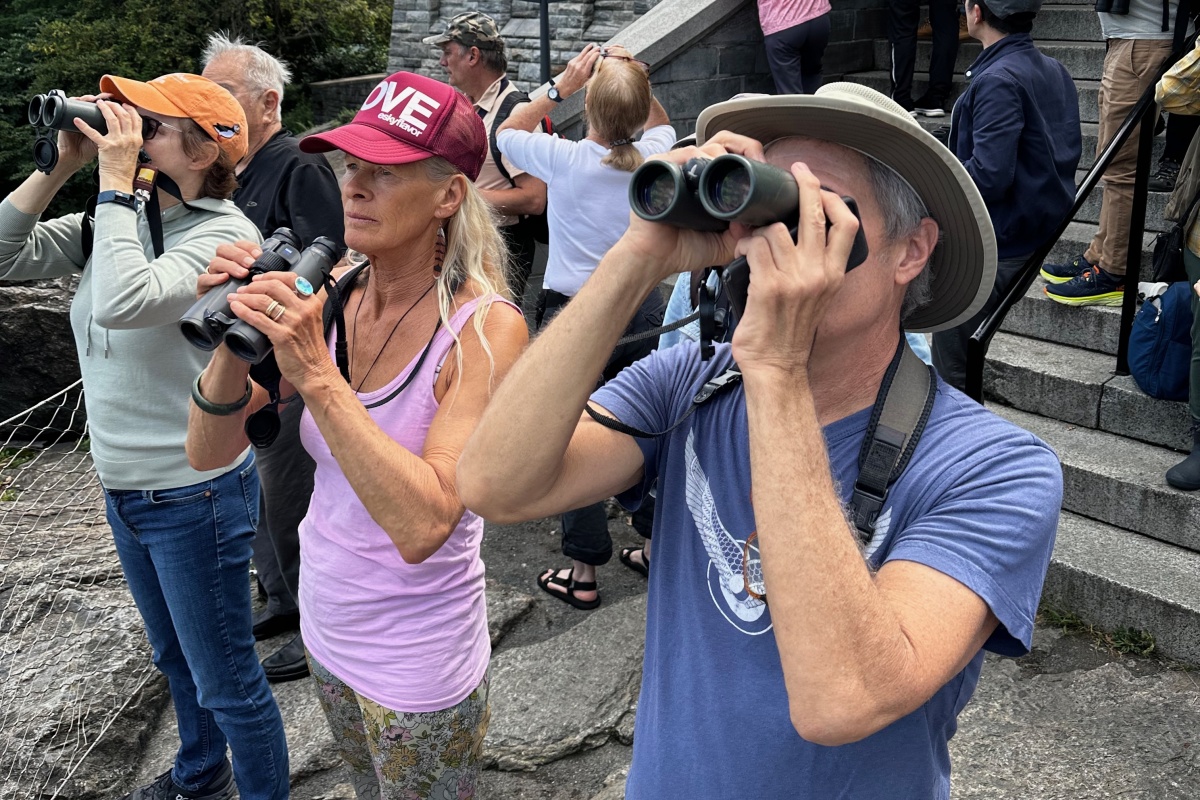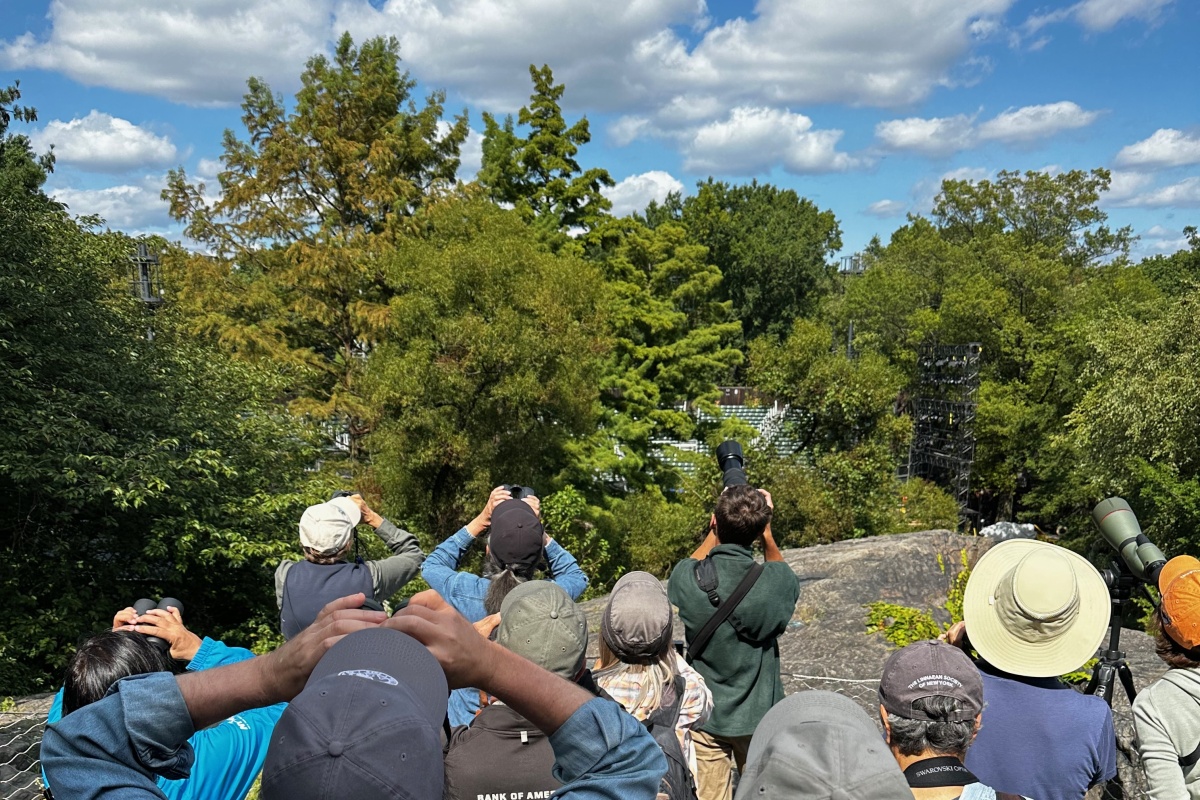Registrar: Nick Dawson
Attendees: 35
Weather: 74 F and sunny. West wind 11 mph.
Species: 29
On a sunny fall day, the Linnaean Society called for a hawk watch at Belvedere Castle in Central Park. More than 30 people gathered to observe migrating hawks and listen to Phil and Anne Ribolow explain how to differentiate the various species flying high overhead.
Throughout the afternoon, we saw many Broad-winged Hawks, which migrate in groups as large as hundreds or thousands, referred to as kettles. Broad-winged Hawks are on the smaller side with chunky bodies and large heads. They are easy to identify because they soar rather than flap, the tail is short and square, and their wings come to a distinct point, which Phil refers to as the shape of a butter knife.
Knowing that many birders confuse Sharp-shinned and Cooper’s Hawks, we focused on identifying these two bird species. We learned that Sharp-shinned Hawks are the smallest hawks in Canada and the U.S., similar in size to a jay or a dove. They have distinctive proportions, including small heads and square-tipped tails. When in flight, they push their short, rounded wings forward, making it difficult to see their heads. The bird also has a distinctive flight style, described by Phil as a “flap, flap, flap, then glide,” similar to a flickering candle. The wing beats are also somewhat erratic and difficult to reliably count.
Conversely, Cooper’s Hawks are larger in size, like a crow. It’s quite easy to mistake a female Sharp-shinned Hawk for a male Cooper’s Hawk because female hawks are larger than males. However, there are distinct differences. The Cooper’s Hawk tail is rounded at the tip, with a prominent middle feather and a clear white tip. The head is quite large compared to its body and has a rounded or crested look. In flight, the large and angular head projects far beyond the wings, giving the bird a cross-like appearance and making it easy to identify. Its wing beats are slower and more regular than a Sharp-shined Hawk’s, making it easy to count as they fly overhead.
A final highlight of the day was a Bald Eagle, easily identified by its distinctive white head. Phil noted that the bird flies like a plank, its large size keeping it from being buffeted by the wind and gliding rather than flapping its wings.
The best time to observe hawk migration in the fall is the day after a cold front has passed when the winds are steady from the northwest or west. These conditions produce strong updrafts as the air currents blow over the north and south-oriented land ridges. Stay tuned for hawk watch announcements, and please join us next year!
Birds
Canada Goose
Northern Shoveler
Mallard
Rock Pigeon
Mourning Dove
Chimney Swift
Herring Gull
Great Black-backed Gull
Double-crested Cormorant
Turkey Vulture
Osprey
Northern Harrier
Sharp-shinned Hawk
Bald Eagle
Broad-winged Hawk
Red-tailed Hawk
Northern Flicker
American Kestrel
Peregrine Falcon
Blue Jay
European Starling
Gray Catbird
Brown Thrasher
American Robin
House Sparrow
American Redstart
Northern Parula
Bay-breasted Warbler
Northern Cardinal
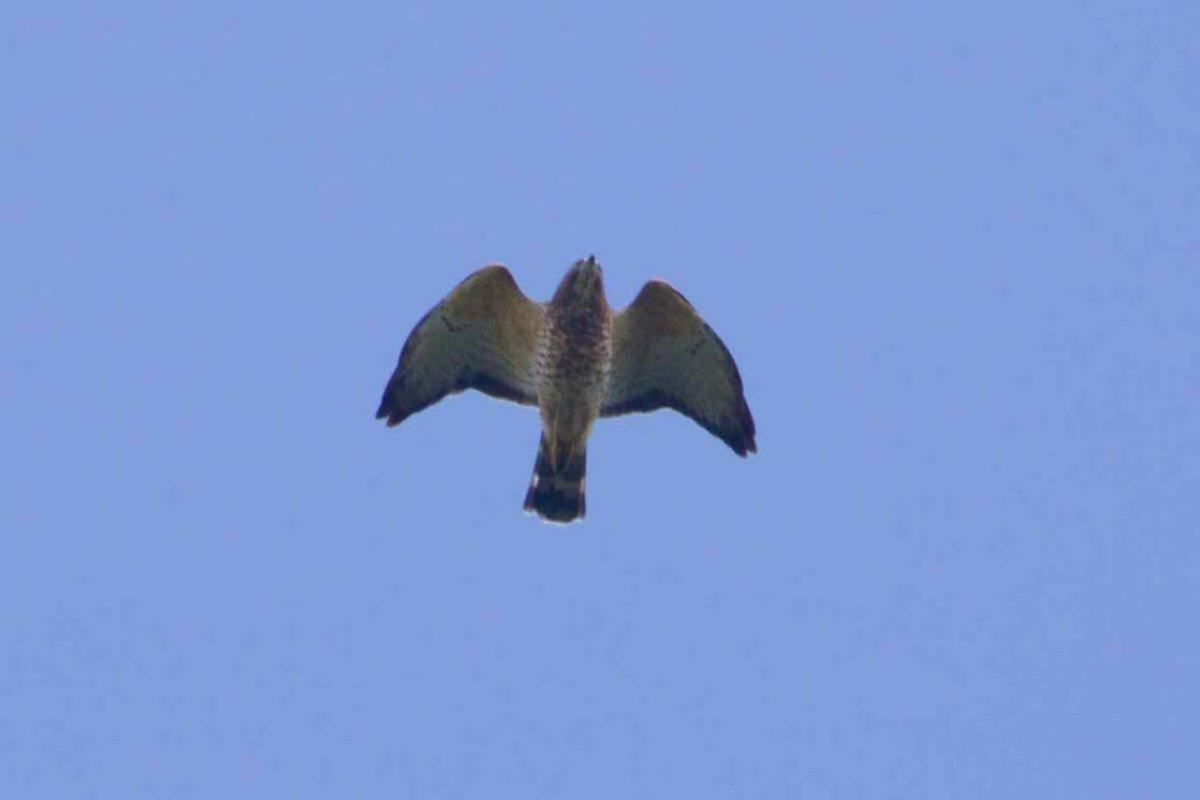
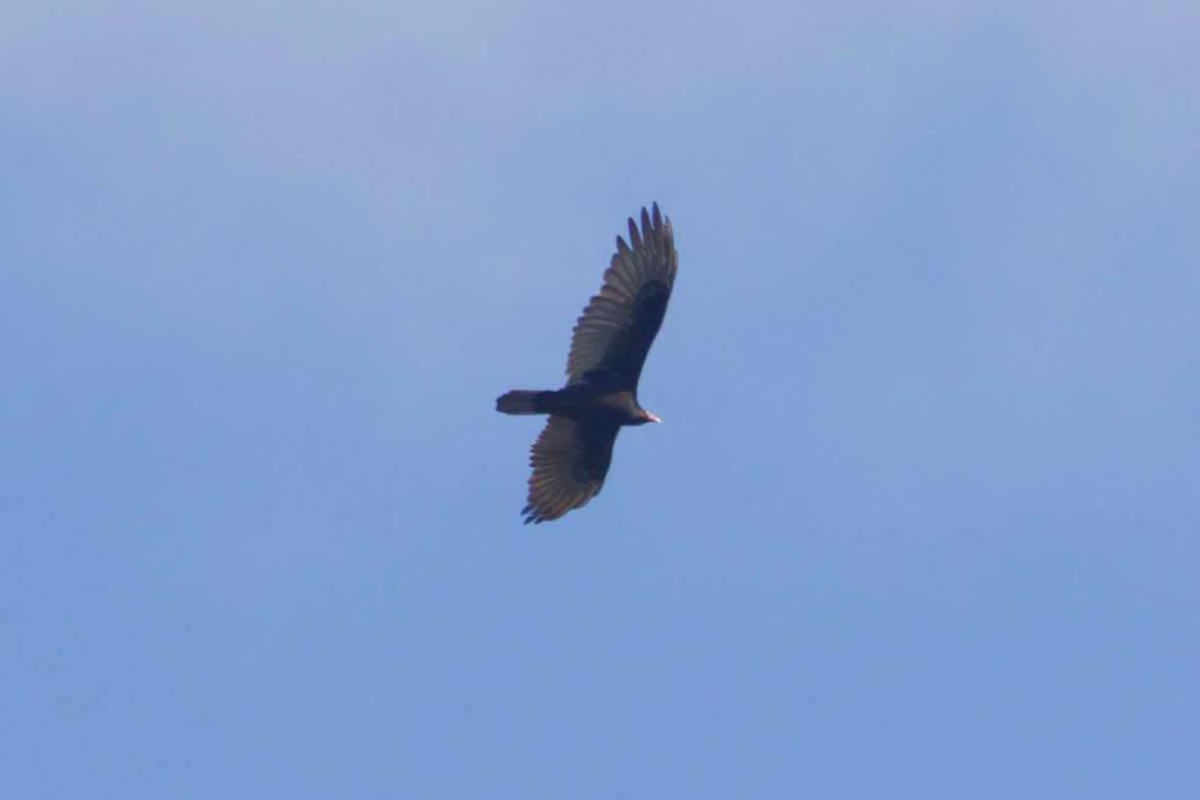
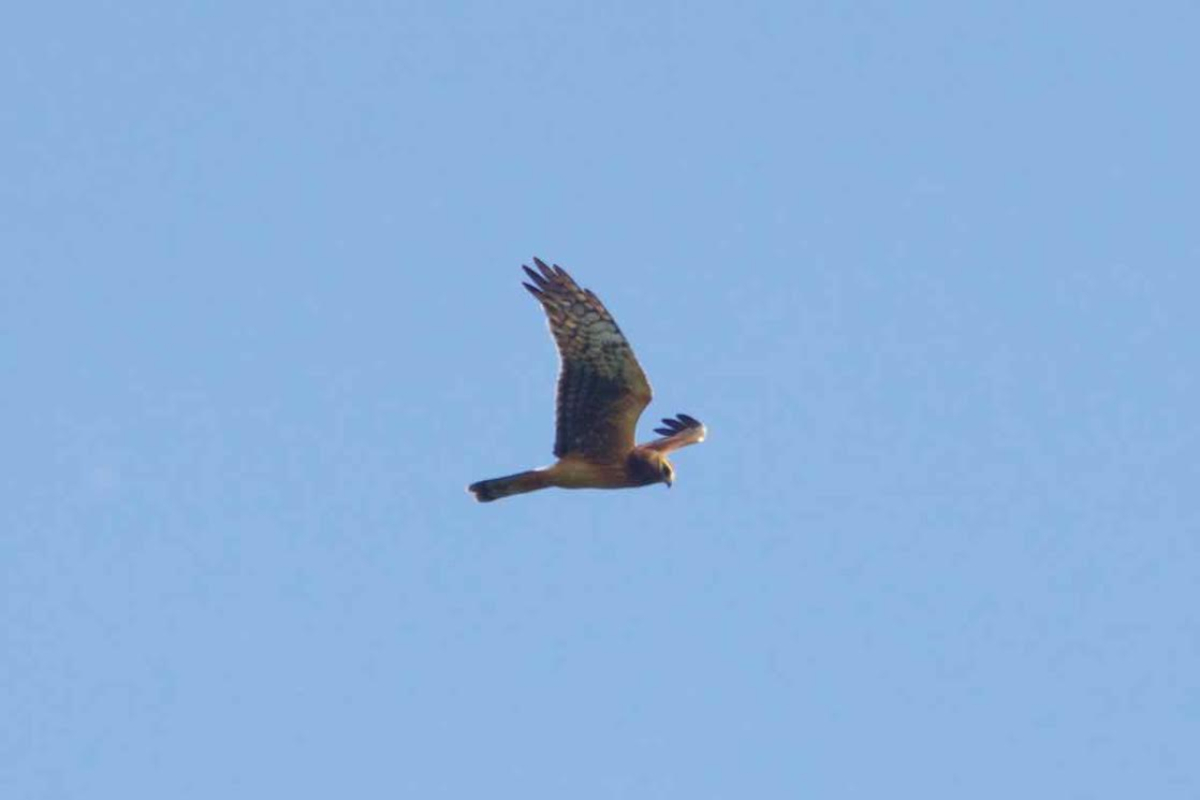
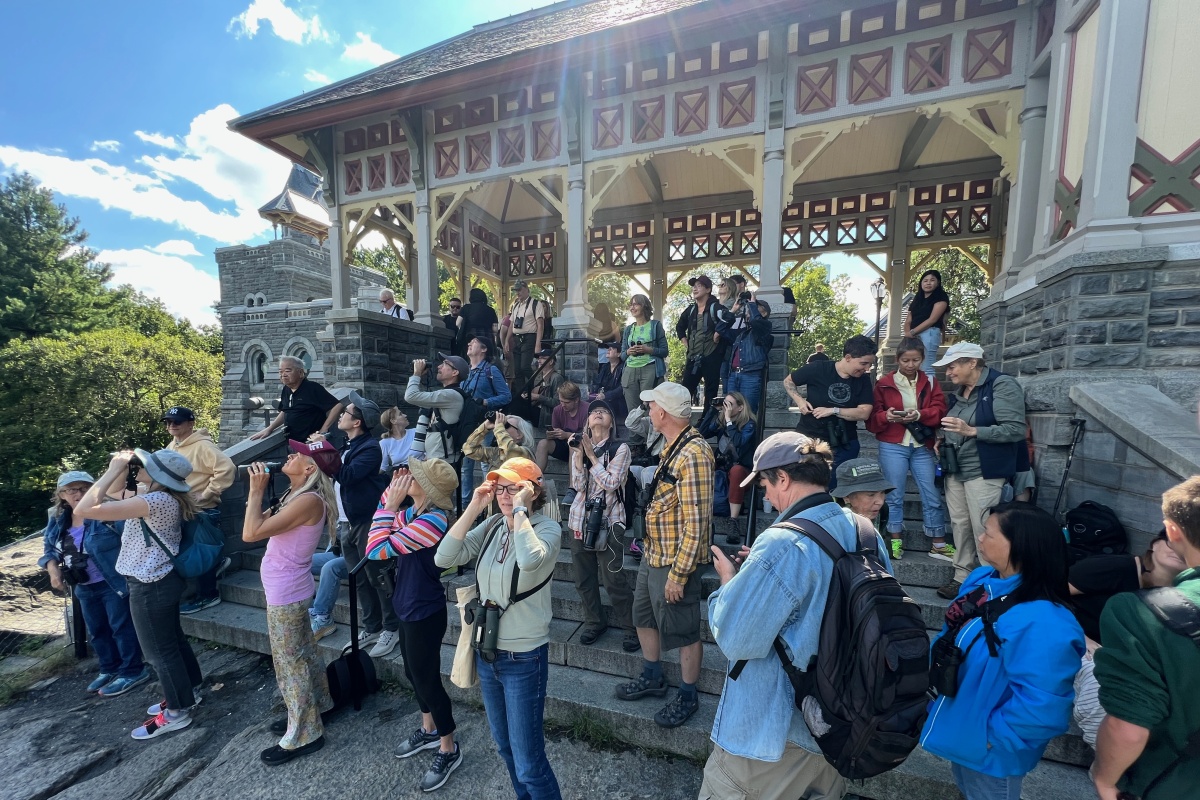
© 2023 Kristin Ellington
